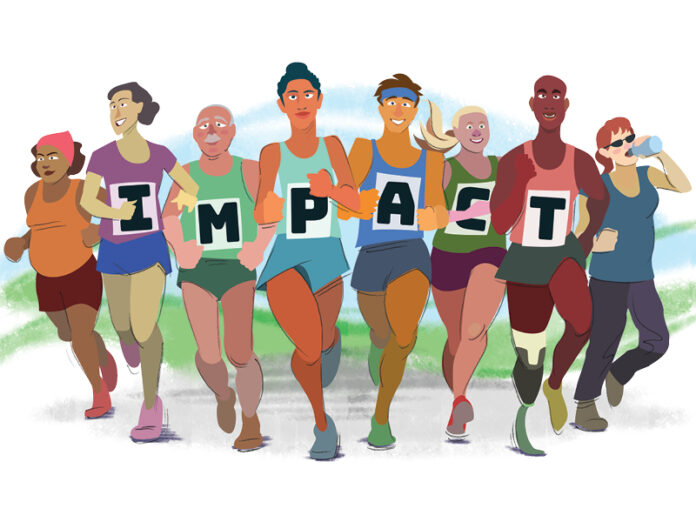
You must run long and do a certain amount of speed work in training to run a successful marathon. But here are strategies that we find often get overlooked in marathon training.
Run Easy & Run Lots
Running the marathon is difficult, but running easy in training is a key part of a successful race day. Marathon running is an aerobic event. It requires approximately 97.5 per cent aerobic metabolism and just 2.5 cent anaerobic metabolism, so it’s important to build that aerobic engine. The easiest and safest way to do so is to run lots of easy miles. The biggest limiting factor to running more is running your easy days too fast. Many runners, whether veterans or newbies, gravitate toward running at an effort of 75-85 per cent of max on their easy/recovery runs. This is a zone where you aren’t running hard enough to push the limits of your lactate threshold, but aren’t running easy enough to allow your body to recover properly and allow you to continue doing lots of running.
Accumulated Fatigue
Marathon training might take over your life for a while and you should accept the fact the race is going to be hard. You need to become accustomed to running on tired legs. There is often too much emphasis on the long run and speed work in standard marathon training plans. When these are looked upon as the sole focus, an athlete is often more likely to rest the day before and after these workouts to be fresh and recovered. But getting in the volume on the days in between can be as important as the workouts themselves. If you take those recovery runs easy enough, they should be manageable. And having the accumulated fatigue from the day-to-day grind of marathon training will stimulate benefits and adaptations during your speed work and the long run that you wouldn’t otherwise achieve if you ran them on fresh legs.
Fuelling
Nutrition is one of the most underrated and under-practiced aspects of marathon training. The human body can store enough glycogen for about two hours of aerobic activity. So, it doesn’t matter if you’re running 2:10 or 6 hours for the marathon and it doesn’t matter how much you carb load. At some point your body is going to run out of glycogen. There is no gold standard for fuelling – some people like gels, some like chews, some prefer real food, like dates. The only way to learn what works for you is to practice, practice, practice. Take a minimum of 30g of carbohydrate per hour — about 1.5 standard energy gels. If your body can handle more fuel, take it. For most people the upper limit is 60g of carbohydrate per hour. That’s about 3 gels. The only way to find out your limit is to practice, practice, practice. Your long runs and marathon paced runs are the best times to do this.
Follow Your Plan
Do not leave things to chance or add variables to the equation on race day. Make sure you plan for the following and have practiced in advance.
- Pre-race meals: Eat what you have trained with. The pre-race pasta party might be your jam, but if you haven’t eaten pasta the night before your long runs, it might not be the right choice. For a race morning meal, bring your own food.
- Time of the race: Do some of your training, especially the long run, at same time of day as your race.
- Shoes: Don’t change the model of shoe you run in too close to the race and don’t run on a dead pair of shoes.
- Gear: Chaffing and blisters can derail your race. Find socks, shorts and a shirt that fit and don’t cause issues. Don’t wear anything new from the event expo for race day.

Click here to download IMPACT Magazine’s printable 12 Week Marathon Training Plan.
















